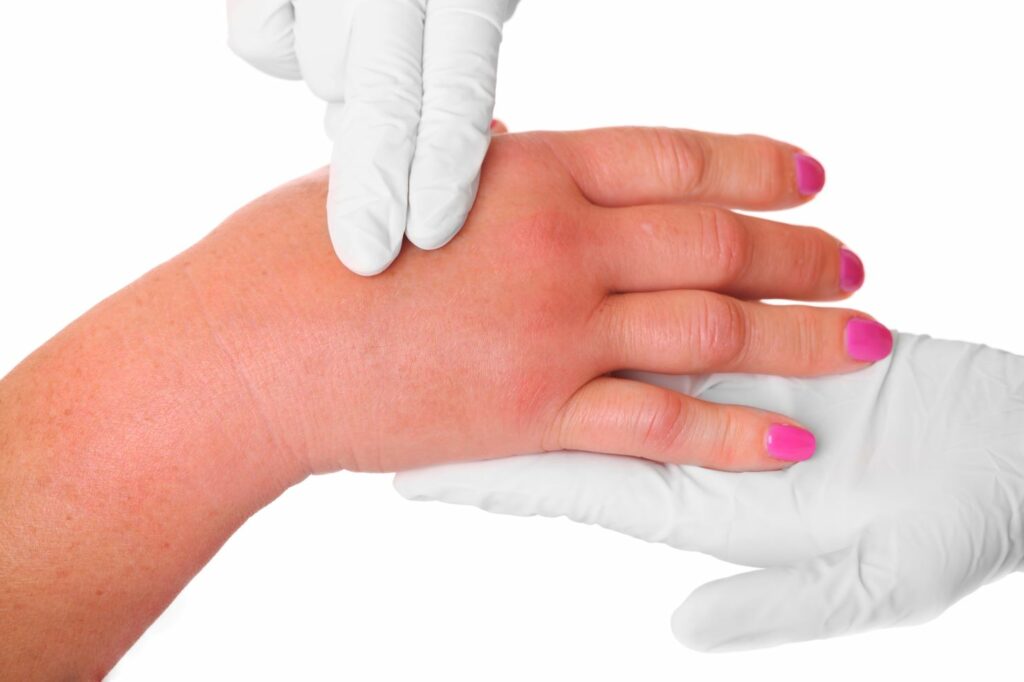Burn injuries can be one of one of the most painful and traumatic experiences one can endure. Whether it's a minor kitchen area incident or a severe burn from a mishap, recognizing the phases of melt injury recovery is important for reliable therapy and recuperation. In this short article, we will certainly delve deep right into the intricacies of shed injuries, their category, recovery processes, and necessary treatment techniques.
Understanding Burn Wound Healing Stages: Healing Insights
Burns are categorized into various degrees based on their extent, each requiring certain clinical focus and care. The healing procedure involves unique stages that have to be acknowledged to ensure proper monitoring and rehabilitation.
What Are the Different Types of Burns?
Burns are normally categorized into 3 primary types:
First-Degree Burns: These influence just the external layer of skin (epidermis). Symptoms include soreness, light swelling, and pain.
Second-Degree Burns: These extend right into deeper layers of skin (dermis), causing sores, severe pain, and swelling.
Third-Degree Burns: These involve all layers of skin and might damage underlying cells. They show up white or charred and can be pain-free due to nerve damage.
Each kind necessitates varying degrees of medical intervention and home care strategies.
The Recovery Process: An Overview
1. Hemostasis Phase
Immediately after a shed injury takes place, the body starts the hemostasis stage to stop any kind of blood loss. Capillary tighten to lower blood flow to the damaged area while platelets accumulation to form a clot.
2. Inflammatory Phase
This phase adheres to hemostasis and generally lasts for 3-5 days post-injury. It involves:
- Increased blood circulation to supply immune cells. Swelling as fluids collect in the tissue. Pain as nerve ends come to be sensitized.
3. Proliferative Phase
Taking area from concerning day https://stephenavjt296.image-perth.org/understanding-the-drsabcd-protocol-explained-a-deep-dive-into-australian-first-aid 3 to week 3 post-burn, this stage consists of:
- Formation of brand-new tissue with collagen deposition. Re-epithelialization where new skin cells migrate throughout the injury bed. Angiogenesis-- the development of new members vessels-- to supply nutrients to healing tissues.
4. Improvement Phase
This final stage can last a number of months to years after a shed injury and is noted by:
- Maturation of collagen fibers. Decreased vascularity as frameworks mature. Potential for scar formation depending upon severity.
Importance of Specialized Burn Dressings: Important Burn Products for Home Care
Proper clothing is crucial in handling melt injuries effectively in your home. Specialized shed dressings offer multiple purposes:
- They shield against infections by producing an obstacle against pathogens. They preserve dampness while enabling gases exchange which is important for healing. Some dressings have antimicrobial residential or commercial properties that protect against infection.
It's crucial to pick suitable dressings based on shed level and dimension. For instance, hydrogel dressings are commonly advised for second-degree burns due to their cooling effect.
Scar Monitoring: Recovering After Significant Burns
Once a burn has healed, scar administration becomes vital for bring back feature and appearance:
Silicone Gel Sheets: Using these assists flatten increased scars over time. Massage Therapy: Encouraging blood circulation can boost flexibility in scar tissue. Laser Therapies: Medical professionals might recommend these for a lot more extreme scarring cases.Common Mistaken beliefs Concerning Burn Treatment
CPR Constantly Restarts Heart Misconception: Debunking Common Burn Treatment Misconceptions
One widespread myth bordering CPR is that it always reactivates the heart; nevertheless, this isn't true-- CPR raises possibilities of survival however doesn't ensure heart activity resumes instantly after cardiac arrest. Recognizing such false impressions can assist in offering exact first aid throughout emergencies including burns or other severe injuries.


FAQs regarding Burn Wound Healing
1. What should I do right away after sustaining a burn?
Answer: Great the location under running water for at least 20 mins and cover it with a tidy fabric or specialized dressing if necessary.
2. For how long does it take for burns to heal?
Answer: Recovering times vary by shed degree; first-degree burns generally heal within a week while second-degree burns can occupy to 3 weeks or more depending upon severity.
3. When must I look for medical focus for a burn?
Answer: Seek expert assistance if you have second-degree burns bigger than 3 inches or any type of third-degree burns, no matter size.
4. Can I make use of ice directly on a burn?
Answer: No, using ice directly can create additional skin damage; use cool (not cool) running water instead.
5. Is there any effective home remedy for burns?
Answer: Aloe vera gel has relaxing properties that may aid with small burns but consult healthcare providers concerning considerable injuries.
6. Just how do I recognize if my melt is infected?
Answer: Indicators include enhanced soreness, swelling, pus discharge, high temperature, or worsening pain; look for prompt clinical advice if you think infection.
Conclusion
Understanding melt wound healing stages is important not simply for individuals but likewise caregivers that supply support throughout healing phases. Knowledge concerning specialized therapies-- like specialized dressings-- and proactive scar management dramatically influences long-lasting results after major burns occur.
Through awareness projects that highlight safety and security around typical hazards like campfires or kitchen area devices-- such as crinkling irons-- we can protect against many cases before they occur! By knowing just how to respond with efficient first aid skills (like those instructed in HLTAID012 training courses), you encourage on your own with useful tools that safeguard lives throughout emergency situations involving burns or other serious First Aid Training in Port Macquarie injuries.
In summary, understanding absolutely is power when handling prospective emergencies related to burns-- from understanding therapy procedures like chemical or electrical burns emergency treatment standards down through various child-centric difficulties seen within education and learning settings-- every detail matters in making certain safety!
This thorough guide aims not only to inform but likewise motivate self-confidence in managing complicated circumstances effectively-- besides-- prevention integrated with timely treatment conserves lives!